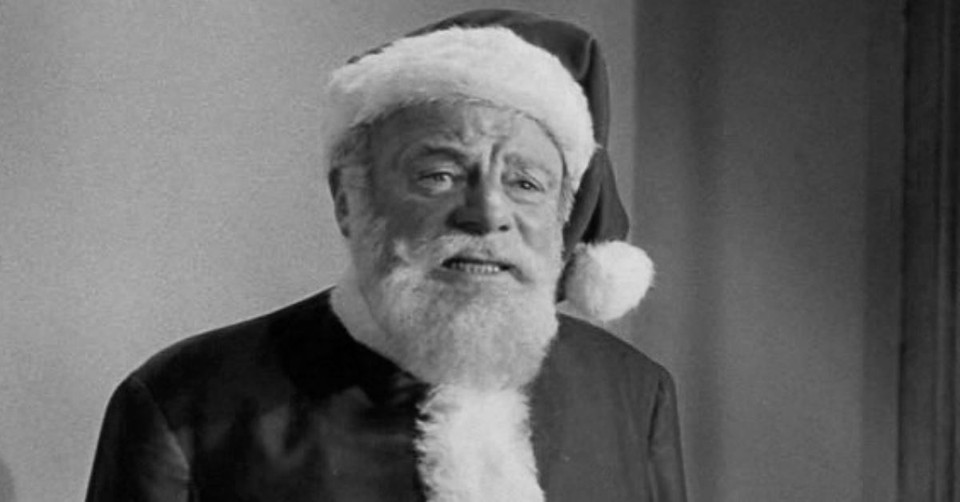Liar, Lunatic, Santa? The Case for Christ in Miracle on 34th Street

The Gospel has a way of seeping into the most unlikely places. Even the Apostle Paul used an idol to an unknown god to point his audiences toward a Gospel message (Acts 17:23).
And yes, we can even find Christ in secular Christmas movies: especially Miracle on 34th Street.
One remarkable scene in particular reveals Christ’s deity, but there are actually a few other ‘runner-up’ scenes that are worth paying attention to as well.
Although other Christmas movies such as A Charlie Brown Christmas and How the Grinch Stole Christmas have messages with Gospel threads, Miracle on 34th Street, in my humble opinion, contains the most out of any secular Christmas movie.
First, what happens in the movie?
For those unfamiliar with this holiday classic, the movie follows Santa incarnate, going by the name of Kris Kringle, as he changes the lives of the people of New York—including one family member in particular.
But a psychiatrist appointment gone wrong lands Kris Kringle in court.
It’s up to his lawyer, Fred, to not only prove that he’s sane, but that he is, in fact, Santa Claus.
Runner-Up #2: Santa’s “Omniscience”
We encounter a few doubting Thomases in Miracle on 34th Street, including Susan, the daughter of a divorcee. Grafted from her mother’s skepticism, she doesn’t believe Kris Kringle is the real Santa Claus, until she sees him speaking to a Dutch girl in her native language.
In other versions of the movie, he speaks Spanish to a native speaker of that language.
This reminds us of Jesus, because Susan has a woman at the well moment (John 4). Jesus, in that story, knew all about the woman at the well’s life, even though they’d only met on one afternoon.
In the same way, Santa knows the languages of all the children of the world, unprompted. He also performs the ultimate miracle by granting a major “prayer” of sorts from Susan. I don’t want to spoil the ending, but here’s the scene from the end of the 1940 version.
Runner-Up # 1: In God We Trust
In the most recent version of the movie, the judge is handed a Christmas card with a dollar bill inside with the phrase, “In God We Trust” etched on it. The judge points out that the Treasury of the US issued that dollar.
Whether or not someone believed in God wasn’t the question, but this plays a major role in the court case because they sought to prove, “a being just as invisible exists.”
This reminds us that we have an innate moral compass. Even our own national laws have a basis in the Law itself. Nothing can escape the grasp of God (Psalm 139:7).
Second, it shows we operate on faith on a daily basis. Whether we believe in God or not, we cannot live without faith.
The Most Remarkable Scene: Santa Understands the Question
This scene might go overlooked if you leave the room for just a moment, but actually has impressive apologetic implications when it comes to the Gospel.
You’ll find the scene starting at the 1 hour and seven minute mark of this video.
When at the hearing, the district attorney asks him, “Do you believe you are Santa Claus?”
Kris Kringle answers, “Yes, I am.”
The DA, clarifies, “Yes, you believe you are Santa Claus?”
“Yes, I believe I know who I am.”
The judge, wanting to remain impartial, but not wanting to commit this old man, suggests Kris may not understand the implications of the question. After all, Kris had worked as Santa Claus at Macy’s. Maybe he didn’t understand that question.
Kris answers, “Your Honor, I understood (the question) perfectly.”
Why is this Simple Scene Worth Spotlighting?
First, this scene is reminiscent of Jesus’ proclamation in John 8:58, “Before Abraham was, I am.”
In this proclamation, Jesus’ statement has serious implications. He basically tells the crowd, “I am God.” Anyone who says Jesus came as a ‘good teacher’ or merely a prophet misunderstands what Jesus said and did. No man would make such a statement unless, as argued by C.S. Lewis in Mere Christianity, he’s a:
Liar: Implicating nothing Jesus ever said was true. He came to trick and mislead. Anyone who claims to be God and knows they are not God falls into this category (Matthew 7:15). Jesus does not fit this criteria because he has given no indication of lying about anything else. He shows integrity throughout his ministry.
At the beginning of the movie, Susan and her mom content themselves with believing Kris Kringle is merely lying about being Santa Claus for the sake of customers in Macy’s. But when they seem him perform “miracles” of sorts, they begin to wonder if they’ve found the true Santa Claus.
Lunatic: If someone makes the claim to be God, and in their own mind, they think they are God, but in reality are not, this makes them a lunatic. Jesus doesn’t fit this either. He seems to carry out all actions through soundness of mind. He communicates intelligibly in his sermons.
In Miracle on 34th Street, Macy’s employs a psychiatrist to evaluate Kris Kringle, to determine his state of mind. After all, if Kris believes in his mind he is Santa, and doesn’t intentionally lie about that fact, maybe he needs to spend time in a psychiatric center, as the characters in the movie believe.
But as seen in the movie, Kris operates of sound mind, especially in his psychiatric meetings. As stated by his lawyer, “The case against Kris is merely opinion.” The psychiatrist didn’t like the fact Kris thought of himself as Santa Claus, so he placed him in court.
In the same way, the Jews didn’t like Jesus’ claims of being God, so they put him on trial as well.
Lord: We have only one option remaining. If someone claims to be God, who doesn’t lie and proves to be of sound mind, then he is who he claims he is.
In the same way in Miracle on 34th Street, Kris Kringle operates with a sound mind, and with integrity.
The Case for Christ in Miracle on 34th Street
Miracle on 34th Street portrays a parallel for our need for faith in the Christian community, based upon evidence. But ultimately, the scene above captures how doubt and faith coexist. In the same way a community puts Santa on trial, humanity put Christ on trial (see Case for Christ).
Similar to the way Santa shows integrity among the scrutiny of doubters in Miracle on 34th Street, Christ proves himself time and time again. He came to us incarnate, lived among us, and changed our lives.
Photo Credit: ©Flickr
Originally published November 14, 2019.







